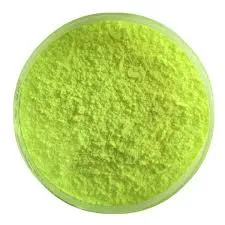The Use of L-Ornithine L-Aspartate in Medical Treatment
L-Ornithine L-Aspartate (LOLA) is a compound that has garnered significant attention in the medical field, particularly in the management of hepatic encephalopathy and liver function. A derivative of the amino acids ornithine and aspartate, LOLA plays a pivotal role in the urea cycle and nitrogen metabolism, making it an essential agent in several therapeutic applications. This article aims to explore its functions, benefits, and potential implications in medical treatment.
Understanding Liver Function and Encephalopathy
The liver is crucial in detoxifying blood, metabolizing nutrients, and producing essential proteins. Among its many roles, the liver converts ammonia—a toxic byproduct of protein metabolism—into urea, which is excreted through urine. In patients with liver dysfunction or cirrhosis, this process is compromised, leading to an accumulation of ammonia in the bloodstream. Elevated ammonia levels can cause hepatic encephalopathy, characterized by cognitive dysfunction, altered mental status, and, in severe cases, coma.
The Mechanism of Action of LOLA
LOLA functions by facilitating the detoxification of ammonia through the urea cycle. The compound enhances the synthesis of urea and promotes ammonium excretion in patients with liver impairment. It also acts as an amino acid source, supporting the production of neurotransmitters that help maintain cognitive function. The dual role of LOLA—both in detoxifying ammonia and providing necessary substrates for neurotransmitter synthesis—makes it particularly effective in managing hepatic encephalopathy.
Clinical Applications and Benefits
Research suggests that LOLA is effective in improving symptoms of hepatic encephalopathy. Studies have shown that administration of LOLA leads to significant reductions in ammonia levels, subsequently improving cognitive function and quality of life. Unlike traditional treatments, such as lactulose or rifaximin, LOLA presents a more direct approach to ammonia detoxification without causing gastrointestinal disturbances.
use of l ornithine l aspartate

Furthermore, LOLA has been associated with enhancing liver function and potentially slowing the progression of liver diseases. Its positive effects on the liver encourage further investigation into its role as an adjunctive therapy in various hepatic conditions.
Safety and Side Effects
LOLA is generally considered safe and well-tolerated. Clinical trials have reported few adverse effects, primarily including digestive discomfort. However, as with any therapeutic agent, careful monitoring is necessary, especially in patients with advanced liver disease, where medication metabolism and clearance may be compromised.
Future Directions and Research
The continued exploration of LOLA's therapeutic potential is essential, particularly in the context of chronic liver disease and other metabolic disorders. Current research is focusing on its role beyond hepatic encephalopathy, examining its effects on liver regeneration and recovery post-liver surgery or transplantation.
Further studies are also investigating the optimal dosing and duration of treatment to maximize benefits and minimize risks. Moreover, understanding the biochemical pathways influenced by LOLA could reveal additional therapeutic targets in liver disease management.
Conclusion
L-Ornithine L-Aspartate emerges as a promising therapeutic agent in the treatment of hepatic encephalopathy and liver dysfunction. Its unique mechanism of action, alongside its safety profile, makes it a valuable addition to the therapeutic arsenal against liver-related conditions. As research continues to unveil its potentials, LOLA could not only improve the quality of life for patients suffering from liver diseases but also pave the way for new treatment paradigms in the management of hepatic disorders. In a future where liver diseases pose an increasing global health challenge, the role of compounds like LOLA will be crucial in advancing patient care and outcomes.

